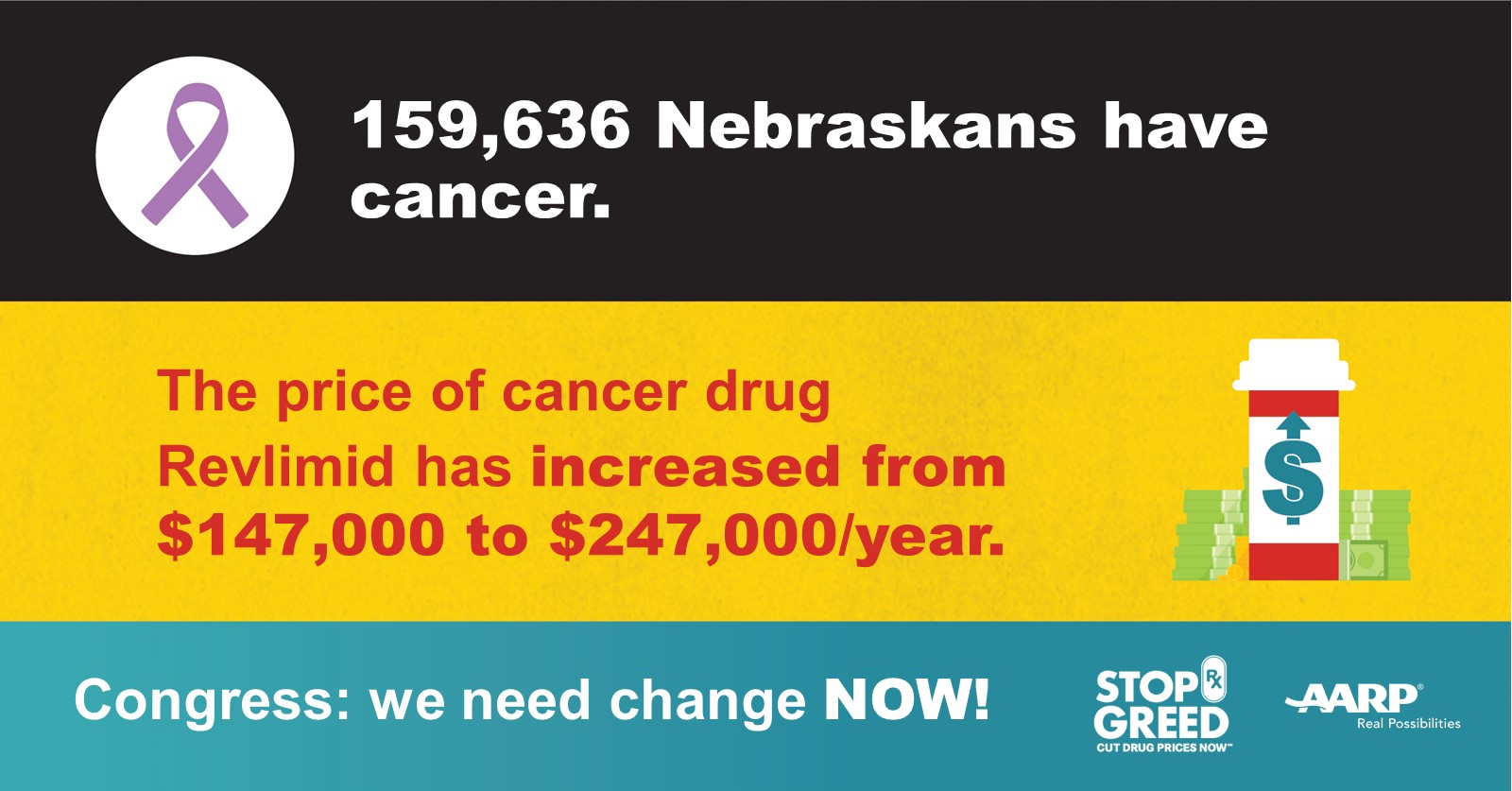AARP Hearing Center
AARP Nebraska has released new state data and an infographic illustrating the impact of high prescription drug prices for Nebraska residents, specifically those living with cancer, prediabetes or diabetes, and heart disease. AARP unveiled the infographic at the National Academy for State Health Policy (NASHP) annual conference as part of AARP’s nationwide Stop Rx Greed campaign to lower drug prices for all Americans.
“While prescription drug prices continue skyrocketing, Americans are being forced to choose between filling life-saving medications or paying rent and buying food,” said AARP Nebraska State Director Connie Benjamin. “So far in 2019, 29 states have passed 46 new laws to rein in drug prices. It’s critical that state and federal lawmakers continue this momentum to stop Rx greed.”
In 2016, 31 percent of Nebraskans stopped taking a prescription drug as prescribed due to cost, as shown in the infographic. The infographic also highlights recent price increases for select prescription drugs commonly used to treat cancer, diabetes, and heart disease.

Between 2012 and 2017, the retail price of:
· Revlimid, used to treat cancer, increased from $147,413 per year to $247,496 per year. In Nebraska, 159,636 people are living with cancer.
· Lantus, a form of insulin used to treat diabetes, increased from $2,907 per year to $4,702 per year. There are 165,888 people with diabetes in Nebraska
· Aggrenox, a heart disease medication, increased from $3,030 per year to $5,930 per year. In Nebraska, 55,419 people have heart disease.
To view the Nebraska infographic, visit www.aarp.org/rxstates. To learn more about AARP’s Stop Rx Greed campaign and view the national infographic, visit www.aarp.org/rx.































































